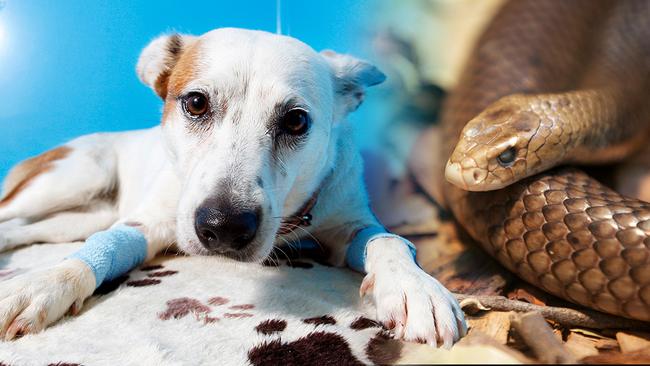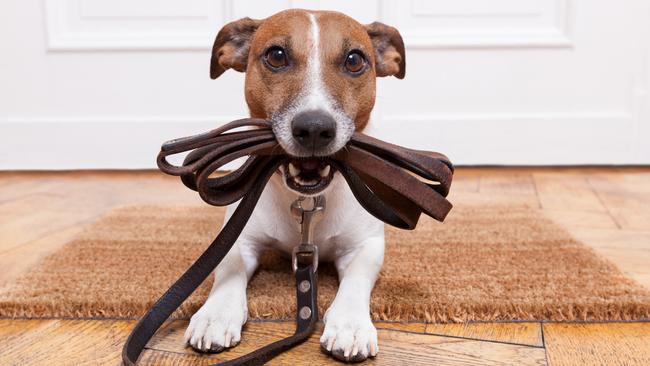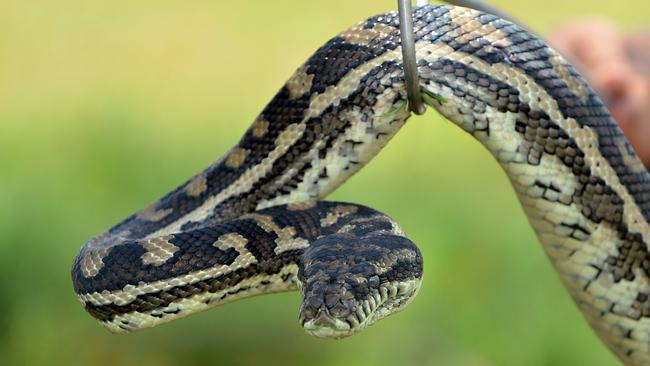Dog owners urged to keep pets on leash, avoid bushlands this Summer
Animal experts are urging dog owners to avoid bushlands and keep their furry friends on a leash this Summer as snake season approaches.

News
Don't miss out on the headlines from News. Followed categories will be added to My News.
Dog owners are being warned to watch for snakes as Melbourne approaches its warmest months.
Animal experts are recommending Victorians clean their backyards, avoid bushlands and keep their furry friends on a leash this Summer.
Veterinary Practitioner of 32 years David Neck said pet owners should start by making their backyard less appealing to snakes.
“Snakes like clutter and water sources, so it’s best to keep your grass cut short and your backyard clear of piles of rubbish or wood,” he said.
Dr Neck said during warmer months, dog owners should avoid long grassy areas and bushland.
“Take your dog to a footy oval during these times and open spaces where you would be able to see a snake from a long way off. It’s also good to keep them on a leash when walking in more remote areas,” he said.

RSPCA Victoria veterinarian Melissa Meehan said signs your pet may have been bitten by a snake include sudden weakness and collapse, shaking of muscles, difficulty blinking, vomiting, loss of bladder and bowel control, dilated pupils and blood in urine.
“Initial symptoms like sudden collapse and vomiting may improve before declining again so don’t rule out a snake bite if your pet seems to be improving,” she said.
If you think your pet has been bitten, it is recommended to keep them as calm as possible and take them to a vet immediately.
“The earlier they get treatment, the greater their chance of recovery. Not all vet clinics will stock anti-venom so call ahead to double check and if in doubt, head straight to an animal emergency centre,” Dr Meehan said.
“If your vet is some distance away you can apply a firm bandage over and around the bite site to apply pressure and help slow the venom spreading to the heart, however don’t wash the wound or apply a tourniquet.
“Anti-venom is expensive and can result in a large vet bill so it is best to try and keep your pets safe and away from snakes in the first place.”
Snake catcher and reptile scientist Jules Farquhar said humans are more likely to come across snakes in Spring and the start of Summer.
“They rely on the sun to regulate their body temperatures, so in Spring when it’s cooler they’re out for longer as it takes longer to bring their temperature up,” he said.

“Whereas in January and February, when it’s quite hot and dry, they only have to be in direct sunlight for five or 10 minutes.”
Mr Farquhar said the best thing to do if you see a snake is to back away from it slowly.
“Don’t try to interact with the snake or kill it – that’s the worst thing you can do. Call a snake catcher straight away,” he said.
“They’re nervous animals and highly strung so they don’t like erratic movements.”
Mr Farquhar said Australian venomous snakes have relatively short fangs which is good for pets.
“It’s a lot harder for their fangs to penetrate through clothing or dogs’ fur,” he said.
“The problem is, if dogs are curious or drawn to the snake they go in face first – so they end up being bitten on the face or feet where they’re not covered in thick fur.”
Five of the most dangerous snakes found in Victoria are the Mainland Tiger, Eastern Brown, Red-bellied Black, Copperhead and Eastern Small-eyed.
Snake bite fatalities have become relatively rare in Australia since the introduction of the anti-venom program. About two people per year die after being bitten by a snake.





